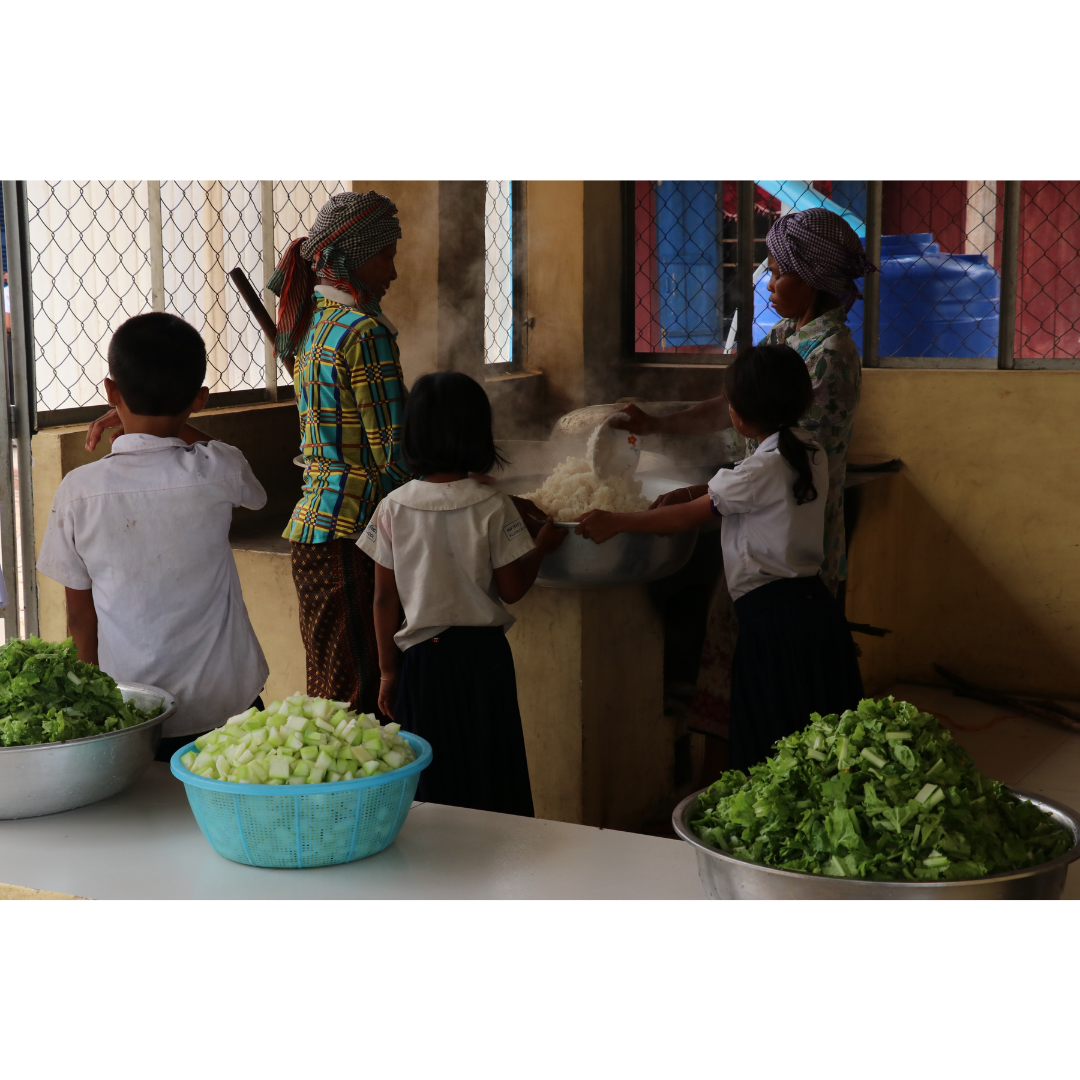
School meal preparations at an elementary school in Cambodia. Credit: Global Child Nutrition Foundation.
A new report from the Global Child Nutrition Foundation paints a vivid picture of school meal programs in action. These programs keep it local. In Sub-Saharan Africa, the Ghana School Feeding Program estimates that 80% of its food comes from local sources near schools. They put women at the forefront. In Tunisia, some school gardens are operated by rural women’s cooperatives; the women use the school garden for free and donate 30% of the produce to the school canteens, while the rest is sold on the local market to support the cooperative. Meanwhile, Timor Leste has the highest school feeding coverage rate in the South Asia/East Asia/Pacific region – 82%.
Conducted for the first time in 2019 and again in 2021, the most recent Global Survey of School Meal Programs garnered participation from 139 countries from all regions of the world, together holding 81% of the world’s population. The survey report highlights the critical role school meal programs play in a country’s development, serving as a social safety net, an incentive for education, and a stable market for local agriculture. In spite of the COVID-19 pandemic, many countries are scaling up their school feeding programs, with 27% of all children of primary and secondary school age receiving food through school meal programs in the 139 countries that participated in the survey. hat’s 330.3 million children worldwide.
Across regions, Latin America and the Caribbean stand out in terms of government support for school feeding, the level of coverage, and the integration of school meal programs with agricultural development. For example, in Argentina, where before the pandemic students received only breakfast or lunch, they now receive both meals through their schools. The school meal program in Mexico started sending children home with take-home rations on a monthly or bimonthly basis to help ease the food-related effects of the pandemic. Overall, school meal programs responded actively and with great agility in the face of COVID-19 disruptions.
Women are vital partners for facilitating and implementing many school meal programs, making up a majority of the cooking workforce. In Zambia, women’s groups sell vegetables to schools to help generate independent income. A similar program in Syria creates employment for women in a ready-made meals kitchen and a factory that produces date pastries for the School Feeding Program. On one hand, this trend presents an opportunity for programs to serve as a platform for women’s empowerment by ensuring that women earn stature and training (even when they do not receive remuneration). On the other hand, the extent to which cooks work on a volunteer basis in lower-income settings undercuts the potential for school meal programs to improve the welfare and economic status of their workforce – particularly their female workforce.
GCNF plans to discuss the survey findings, among other topics, at the upcoming Global Child Nutrition Forum, which will be held in Cotonou, Benin in October. To learn more about the 2022 School Meal Programs Around the World report, go to survey.gcnf.org.
The Global Child Nutrition Foundation (GCNF) is a global network of governments, businesses, and civil society organizations working together to support national, locally-sourced, and nutritious school meal programs. GCNF expands opportunities for the world’s children to receive adequate nutrition for learning and achieving their potential. We envision a future where school meals sustainably nourish all children and help them, their families, communities, and nations to thrive.
About the Author
Tori Spivey
Tori Spivey serves as the Communications Officer for the Global Child Nutrition Foundation. Her passion for youth development and girls’ education began at the University of Virginia. It has thus far taken her to Morocco, where she served as a Peace Corps Volunteer, and the University of Denver in Denver, Colorado, where she graduated with a Master of Arts in International Development with a certificate in Public Diplomacy.
